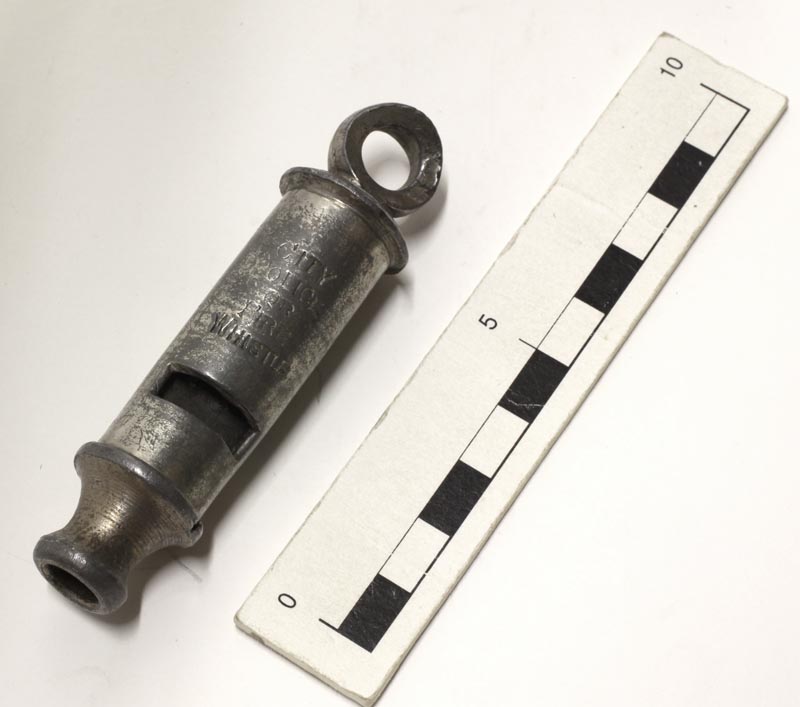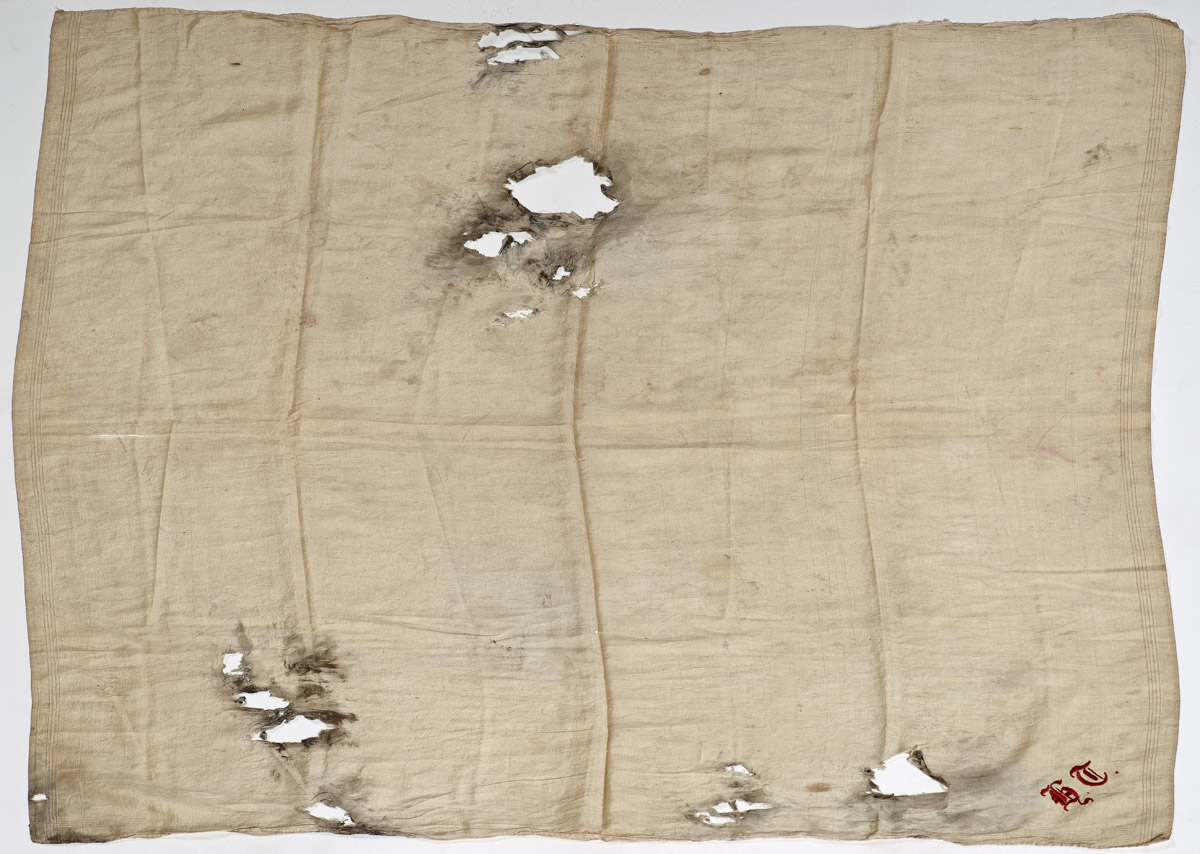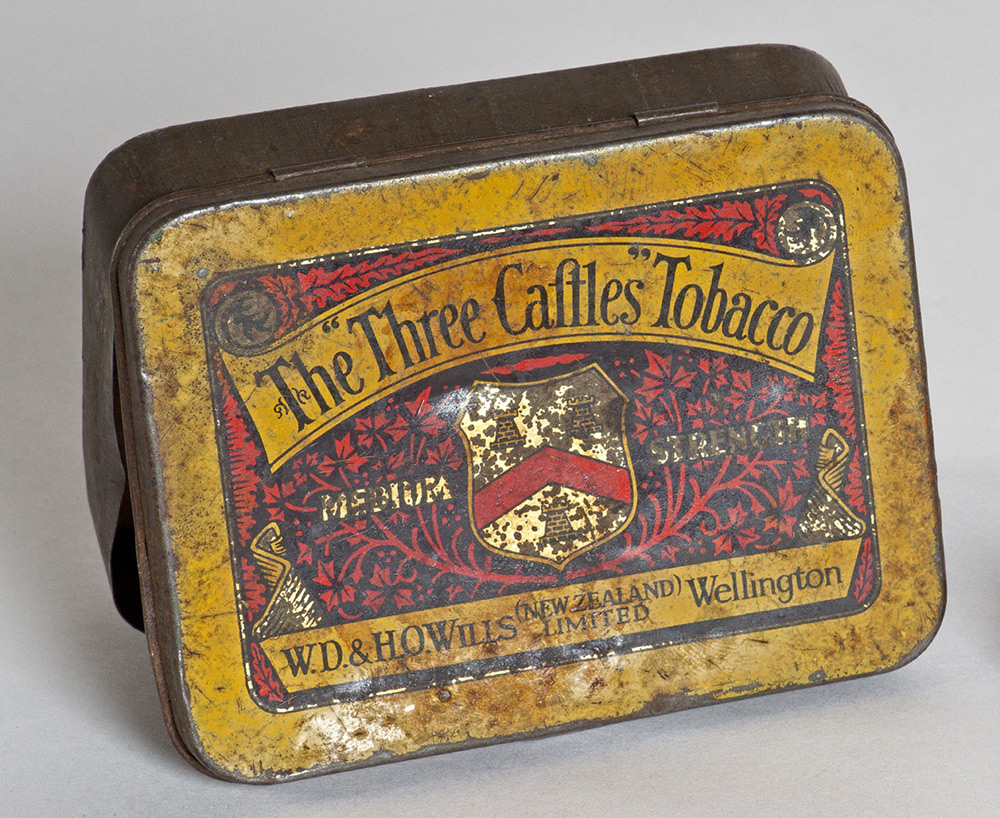


In broad daylight on Easter Monday, 1892, a gun-toting masked man rode into New Zealand folklore. At 5.10pm on 11 April, New Plymouth settler Henry Jordan was riding his horse towards his Carrington Road home when he was accosted by a mysterious figure, soon to be known as Taranaki's notorious highwayman.
A feature story published in the Taranaki Herald after the highwayman's capture the following year, detailed the hold-up: “About a mile and a half from New Plymouth a man rode out from the side of a hedge and called out – ‘Halt! I demand your money, or I will put a bullet through your brains!' at the same time presenting a revolver at the astonished settler.”
That same story, which appeared on 24 July 1893, described the vision Mr Jordan faced. “The man wore a mask, and was dressed in a red coat and dark trousers with a red stripe down the legs, having on his head a small, round, tight-fitting cap. At his side he carried a sword, and in his belt a revolver.”
For the next 15 months, the masked figure gained a great degree of notoriety, as he filled the citizens of Taranaki with both fear and admiration. While people became frightened to be out after dark, others saw the highwayman as a noble person who only took from the rich.
This assumption followed two separate incidents on 29 October 1892. That night the highwayman stopped John Kibby at the Te Henui bridge and demanded: “The money or your life.” Mr Kibby replied: "I have no money, friend. I am a poor working man …" So, the highwayman took nothing and sent his intended victim off with the words: “You may go. I don't interfere with working men.”
A short time later the mysterious man stopped James Reynolds on Devon Street (East) near Eliot Street and demanded money. “Mr Reynolds assured the man he had none, when the modern Dick Turpin, in highly dramatic tone asked, 'Are you a working man?' The reply being affirmative, Mr Reynolds was told to go on, the man saying he had no wish to interfere with him as he was a working man himself” the Taranaki Herald reported.
The highwayman's exploits continued for more than a year, with a couple of raids deemed more serious than others. One was on 2 July 1892, when the keeper of the Ōmata tollgate was robbed. The Taranaki Herald said that William Knight Collins, “an elderly man and a cripple” on duty at the turnpike, was asked to hand over all the money he had. Mr Collins gave the highwayman more than £5 in silver.
“The man, after getting the money, walked backward towards the door and on reaching it, took the key out of the lock, saying he intended to lock Mr Collins in so that he could not follow him.” When the gatekeeper said he was crippled and couldn't follow anyway, the highwayman threw the key on the table and left.
On Saturday, 11 February 1893, the elusive robber held up New Plymouth's White Hart Hotel in what the newspaper described as “an act of audacity”. The highwayman entered the hotel through a private entrance on Queen Street and went into the bar. He pointed his pistol at barman Charles Dickenson, who was in charge while the landlord was out of town, and said “Bail up, give me money, for money I'll have”.
There were several men in the bar that night, including a Mr F. Bullot, who thought the hold-up was a joke. But there was nothing humorous about the highwayman's next demand. With gun cocked at Mr Dickenson, he said “Stand aside or I'll blow your bloody brains out”. Despite his threats, the masked man fled the hotel with just a handful of coins and a bottle of whisky. "He then walked out of the bar by the way he came in, and out of the door into Queen St, walking with a military stride, his sword and spurs clinking as he went."
In the self-penned book, called A Highwayman With A Mission, the scoundrel talked about how he carried out a couple of minor hold-ups, then took off his disguise and sauntered into the centre of New Plymouth to enjoy the accounts. Calmly smoking a cigar, he asked "What means this excitement? Is someone hurt?"
When he was told of his own dastardly deeds, he acted the part of an innocent bystander and watched in amusement as half a dozen troopers and police, joined by several civilians galloped off at great speed in search of the highwayman. He sums up this moment in his book: "Brave men, no doubt, but your enemy was behind you, meek as a lamb and smiling, to outward appearance, but inwardly almost ready to burst with merriment, thinking of what a glorious chase they would have after the terrible enemy, who at that moment is calmly strolling up the street, still smoking his cigar." The book, which was published in 1954, was written under the pseudonym of Georgie.
Just who the highwayman was came to light one quiet night in downtown New Plymouth. About 11pm on 20 July 1893, the highwayman walked into the Criterion Hotel at closing time. He strode in, startling the billiard marker, Thomas Budd, who was about to close the side door. At the bar, Mr H. Simmons was discussing matters of business with hotelier Mary Cottier, whose husband was upstairs in his sickbed.
“Bail up” the highwayman ordered, and asked for cash. Both Mr Simmons and Mrs Cottier thought the man was playing a joke and she asked him to pass on. Which he did. As the rogue turned to leave the hotel, he was pounced on by Harold Thomson (the son of the local police inspector) and his drinking companion Charles Holmes. During the scuffle the mysterious man's pistol went off, blowing a hole in Mr Thomson's coat and injuring him, but not seriously. The highwayman always maintained the shooting was an accident.
Meanwhile, a number of other men joined in to down the masked villain, including Mr Simmons and Mr Budd. The last on the scene was William Cottier, who was aroused from his sickbed by the noise. It was he who struck a match and carried out the dramatic unmasking of the villain.
Lying before the scrum of peering faces was a young, well-liked New Plymouth carpenter, called Robert (Bob) Wallath. He was aged 20. A few minutes afterwards the highwayman was safely in police hands. Wallath's book says he was met at the station by a sergeant he knew well, with the remark: "This is the biggest deception I ever knew, for if anyone would have told us that you were the man we would not have believed it."
The court case was a big event, with about 500 people turning up for the 28 July hearing, held before six JPs. Wallath was charged with felonious intent and of malice aforethought to kill and murder Harold Thomson. He was also charged with demanding money from Mary Jane Cottier with menaces and threatening her with a loaded revolver. The JPs decided there was a prima facie case to answer, and Wallath was remanded in custody to the Supreme Court.
While in the New Plymouth Prison, Wallath escaped, climbing a clay bank and crossing the Huatoki Stream. He didn't get any further than that, because he was swiftly recaptured and put back in jail.
On 5 October Wallath appeared in the Supreme Court. After a two-day trial he was convicted and sentenced to eight years in jail. Before the judge made his final comments, Wallath's solicitor, Mr Weston, said: "It must be remembered that the prisoner suffered from brain fever at one time and also epileptic fits."
A few days later, Wallath was sent to Mount Eden Prison, where he celebrated his 21st birthday. In December 1896, he was transferred to a Wellington prison. In the end, he only served four-and-a-half years in jail. He was released in 1898, following submissions made by the residents of New Plymouth, who protested against the severity of his sentence.
Wallath left prison a changed man. In his cell, he had turned to Christianity, and spent the rest of his life doing good. The lengthy diary he wrote in jail was filled with religious fervour – and other revelations. A cut-down version of the diary later became the published book, A Highwayman With A Mission.
In this, it tells how Wallath had a dream of being a criminal in his early days, which would then lead to a life of goodness. It also reveals how he chose to become that figure of folklore."Through reading stories, such as Dick Turpin and other 'Gentlemen of the Road' there seemed to be cast over me a sort of romantic glamour and I became endowed with a marvellous power."
The Highwayman died in 1960.
Wallath, R.H. (1959). A highwayman with a mission: the story of New Zealand's most notorious brigand of more than 60 years ago. New Plymouth: Avery Press
The New Plymouth highwayman: his history, plucky capture, and examination in the Police Court (1893). New Plymouth: New Plymouth News Office.
Puke Ariki Heritage Collection: Robert Wallath
LinkPlease do not reproduce these images without permission from Puke Ariki.
Contact us for more information or you can order images online here.